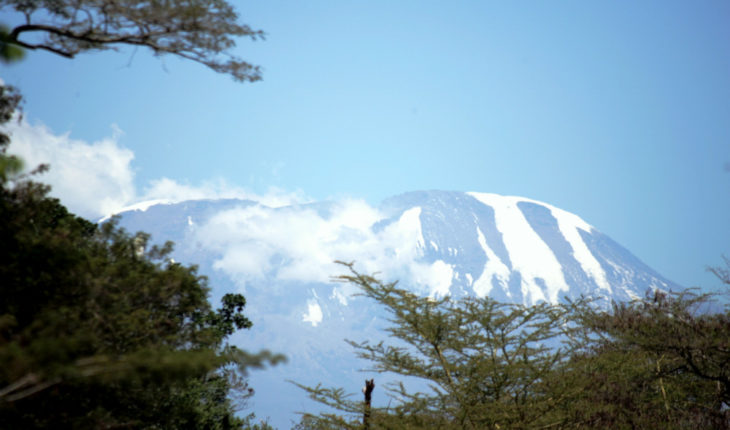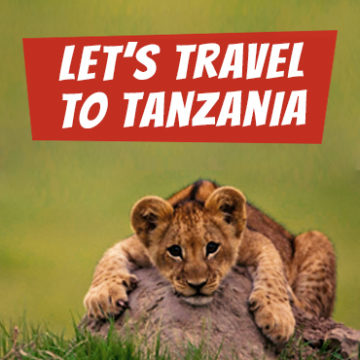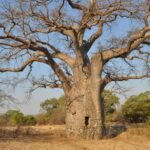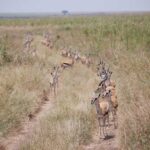Tanzania is an incredible and beautiful land for its untainted nature, the free wildlife, the majestic Kilimanjaro that overlooks unflappable the savannah, and the Zanzibar’s archipelago in the crystal clear waters of the Indian Ocean.
The Main National Parks
Tanzanian Parks are among the best-known in the world for their wildlife variety and the beauty of landscapes. In many of these parks is relatively easy to sight the famous “Big Five” (lion, African elephant, leopard, buffalo and rhinoceros), the most feared and wanted species in the time of the big hunting trips, and those that, still today, excite the safari lovers.
The Ngorongoro Crater
In the Ngorongoro Conservation Area, 180 km from Arusha, the Ngorongoro Crater is inhabited by an amazing quantity and variety of animal species (more than 25.000 mammals). Around the waters you could see from the Big Five to the giraffes, from the zebras to the hippopotamus, by way of a huge variety of birds, including one of the most important African colonies of flamingos. While in national parks, the human settlements are not allowed, in the Ngorongoro Conservation Area, the Maasai and their livestock can cohabit freely with the wild animals.
The park is particularly popular during the dry season, from July to October, when the vegetation is less dense and the animals gather together around the waters.
For more information:
The Seregenti National Park
On the border between Tanzania and Kenya, the Seregenti Park (endless plain, in Maasai language) covers about 14.000 square kilometres of savannah and it is part of the World Heritage Site. An infinitive space with a unique fauna and flora. The central area is inhabited mostly by settled animals, but one of the most impressive spectacles that you could see here, are the big summer migrations (from July to October) and winter migrations (from January to February) between Seregenti and Ngorongoro.
For more information:
The Tarangire National Park
This is one of the most beautiful and evocative Tanzanian parks and it takes its name from the river that crosses it. Famous for its herds of elephants and the majestic baobab, you could explore it participating to photo-safari, safari in hot air balloon, nocturnal game drive or on foot accompanied by expert Maasai guides. During the dry season (from June to November) many animals are concentrated on the areas near the river, but during the moist months (from November to May) you could admire charming landscapes and a lush nature.
For more information:
The Great Migrations (in winter and in summer)
The Great Migration in the Serengeti and Ngorongoro’s parks is absolutely impressive. The herds of herbivores, wildebeests and zebras, followed by the predators move looking for a more favorable weather in a long and dangerous trip. The period from December to April matches the winter migration that will lead the animals to south, in Lake Ndutu area. The summer migration takes place between July and October when the animals leave again to the north to cross the Mara river close to the border with Kenya. Attending the perilous ford of the Mara river, the famous River Crossing, is a unique and incredible experience.
For more information:
The Main Lakes
Tanzania is a lush and evocative land, able to offer, in addition to the Zanzibar’s sea, the savannah with its animals and its different and interesting lakes. Here we want to present you some of them.
Lake Manyara
Lake Manyara is one of the northern Tanzanian lakes and it is located in the namesake national park. This alkaline water lake attracts a lot of animals during the dry season and a great variety of birds, including pink flamingos, during the moist season. Therefore, it is a suggestive destination at any time of the year for photo-safari, walking safari and nocturnal safari.
For more information:
Lake Natron
Lake natron, the most important reproduction site of pink flamingos in the world, it is an about 600 meters of altitude saline lake in Northern Tanzania. The concentration of millions of flamingos between June and October is an incredible spectacle. During the dry season, for the extreme salinity that helps the proliferation of the cyan bacteria, waters assume a surprising red colour.
Ol Doinyo Lengai volcano overlooks the lake and it’s the sacre mountain for Maasai people.
For more information:
Lake Eyasi
In the Lake Eyasi region, near Ngorongoro Conservation Area, the local culture will seduce you. Here there are the last Hadzabe fmilies, the only Bushmen tribe of the Eastern Africa, and the iron workers, Datoga, who produce arrowheads, bracelets and other ornaments. The Hadzabe are a nomad population, they use bow and arrow and in their language they have a characteristic repertoire of cracks and whistles suited to the hunting of wild animals.
For more information:
Arusha’s city
Starting point for the safari in the Northern parks, Arusha is a city with more than four hundred thousand inhabitants and it is one of the most dynamic centre of Tanzania. In a very fertile agricultural region that produces cereals, coffee, fruits, vegetables and flowers, the city has a lot of shops and markets as the colourful Maasai market, where you can find local wooden crafts, masks, but also livestock, food and remedies of traditional medicine.
A million of foreign tourists visit Arusha every year, this city offers a lively nightlife thanks to the various bars and restaurants and it proposes different cultural events. Placed on Mount Meru at 1400 meters above sea level, the city is pleasant in all seasons because it has a temperature that never oversteps 30 degrees.
It is effectively connected to the other important Tanzanian centres by land and air, Arusha is only five-hour drive from Nairobi.
For more information:
Mount Kilimanjaro
The Mount Kilimanjaro with its 5895 meters of height is the tallest African mountain and it stands majestic and lonely on the savannah.
The Kilimanjaro’s ascension is demanding but available to the lovers of trekking in good physical conditions. There are no technically difficult steps but it is essential getting used with caution to the climatic variations and to the high altitude. In an impressive sequence of ecosystems and temperatures, the ascension starts from the slopes tropical climate and arrives to the summit arctic climate, by way of the mountain forest and the alpine desert.
To climb you can choose among different itineraries: Marangu Route, very popular and equipped with shelters for overnight, the evocative Machame Route for the most adventurous spirits, the less known but equally spectacular Lemosho Route and the Rongai Route that permits to go up and down from the opposite versants.
For more information:
Zanzibar’s Archipelago
Zanzibar is the blue pearl of Tanzania. Among the seventy islands counted by the archipelago, the most important are Unguja, Mafia, Pemba and Fanjove, authentic paradises of unspoiled nature, protected fauna, white beaches and relax. Here there are the most awesome snorkeling and diving spots of the world, wonderful marine reserve, lush forests and preserved mangroves. You will live the unique contact with nature and the magic offered by the Tanzanian breath-taking landscapes, without renouncing the luxury of seaside resorts, smells of spices and “Safari Blue”.
For more information:
The Main Excursions to Zanzibar
Zanzibar has beautiful sites for amazing experiences to live in short but intense excursions.
You could embark on a dhow to the discovery of dreamy beaches in the company of the Menai Bay’s dolphins in the Safari Blue excursion. Or you could choose to visit the ancient prisons of the slave trade at Prison Island, the island inhabited by the Seychelles’ giant turtles and surrounded by a crystal clear sea ideal for snorkeling.
Don’t miss to dedicate a few hours to the discovery of Stone Town, an ancient and particular city with its maze of streets, the lime painted houses, the spices market and some monuments of historical and cultural interest.
In the Spice Tour you will start to the discovery of the Unguja island’s hinterland, its wood sculptors and the traditional spices cultivation. This excursion can be combined with a suggestive walk in the virgin forest of Jozani among majestic trees and amazing endemic animal species.
For memorable snorkeling and diving experiences, choose the excursion in Kizimkazi or to the Mnemba’s Atoll, marine park for the protection of corals, different tropical fish species, turtles and dolphins.
For more information:








